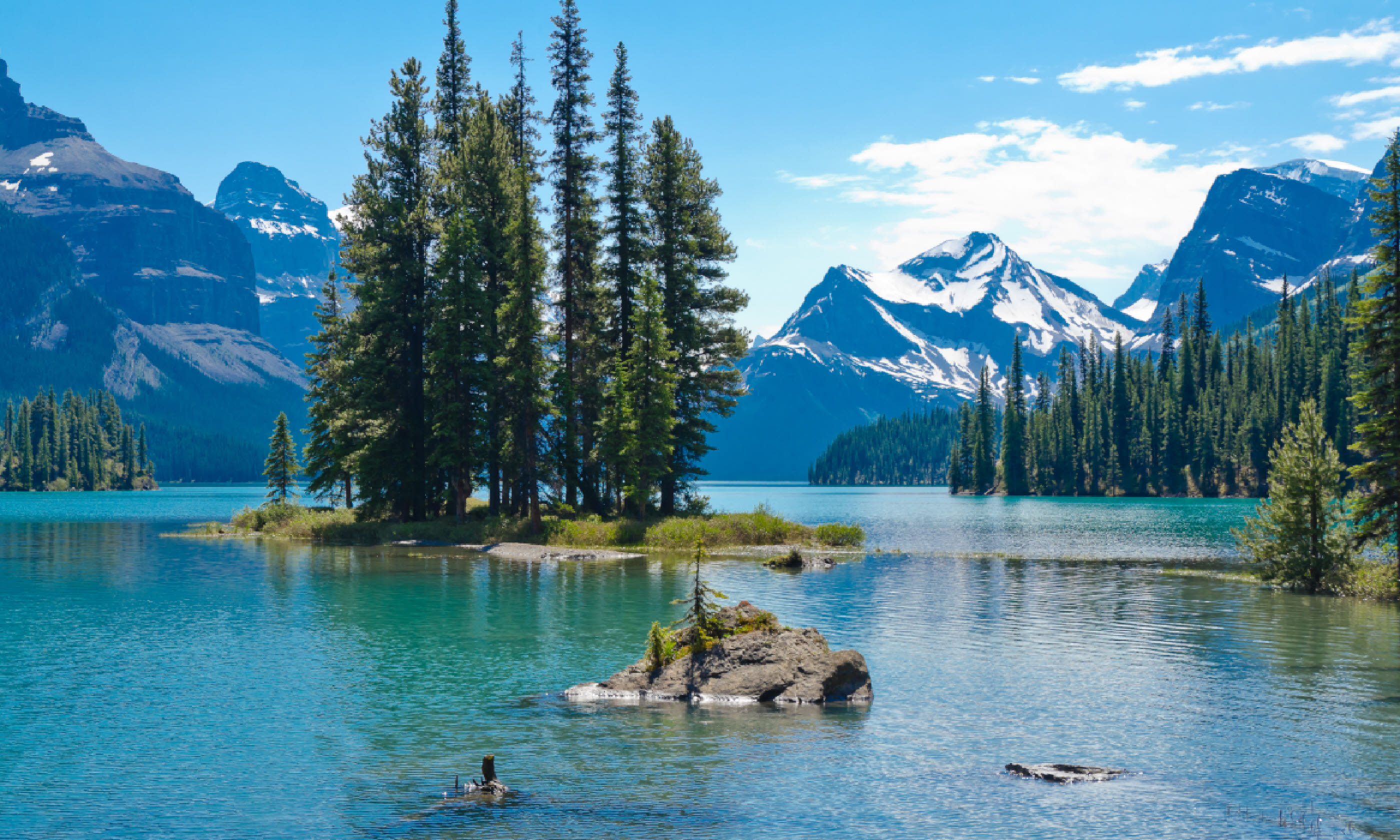
8 incredible lakes around the world
Whether they're encircled by mountains or slicing through wild landscapes, these amazing lakes will steal your breath away...
Lake Maligne, Canada
Maligne Lake's inviting azure waters, fringed with towering pine and spruce trees, cut through the snowy peaks of the Canadian Rockies to create an idyllic location brimming with adventure. Located in Jasper National Park, some 400km west of Edmonton, the lake and its surroundings (
pictured above, Shutterstock) are home to a vast array of wildlife including black and grizzly bears, moose and bald eagles.
Best for? There is no better way to experience the lake than by paddling along its 22.3km length in a canoe.
For those staying longer than a day, campsites at Fisherman's Bay, 13km from Home Bay, and Coronet Creek, 21km from Home Bay, offer a welcome place to rest your aching bones after a day of exploring.
What else can I do? The Maligne Lake area is home to a plethora of hiking trails that allow you to follow the lake's shoreline, navigate through the forests, or hike to a mountain peak.
Trails such as Moose Lake Loop and the Mary Schaffer Loop are an easy introduction to your surroundings. Two of the most popular routes are the Opal Hills Loop and the Bald Hills Loop; both last 4-6 hours and boast stunning views of the lake, valley and surrounding mountains.
Best time to visit? Visiting between May and October will allow you to experience Lake Maligne at its sparkling best – and conditions will suit hiking, camping and canoeing. Visiting during winter can also be thrilling, with snowshoeing and cross country skiing available.
Lake Wakatipu, New Zealand
If you like stunning scenery with a heavy dose of adventure, then Lake Wakatipu and Queenstown is for you. Bordered by mountains – including the aptly named Remarkables range – and home to a number of world renowned hiking trails, New Zealand's longest lake is one big adventure playground.
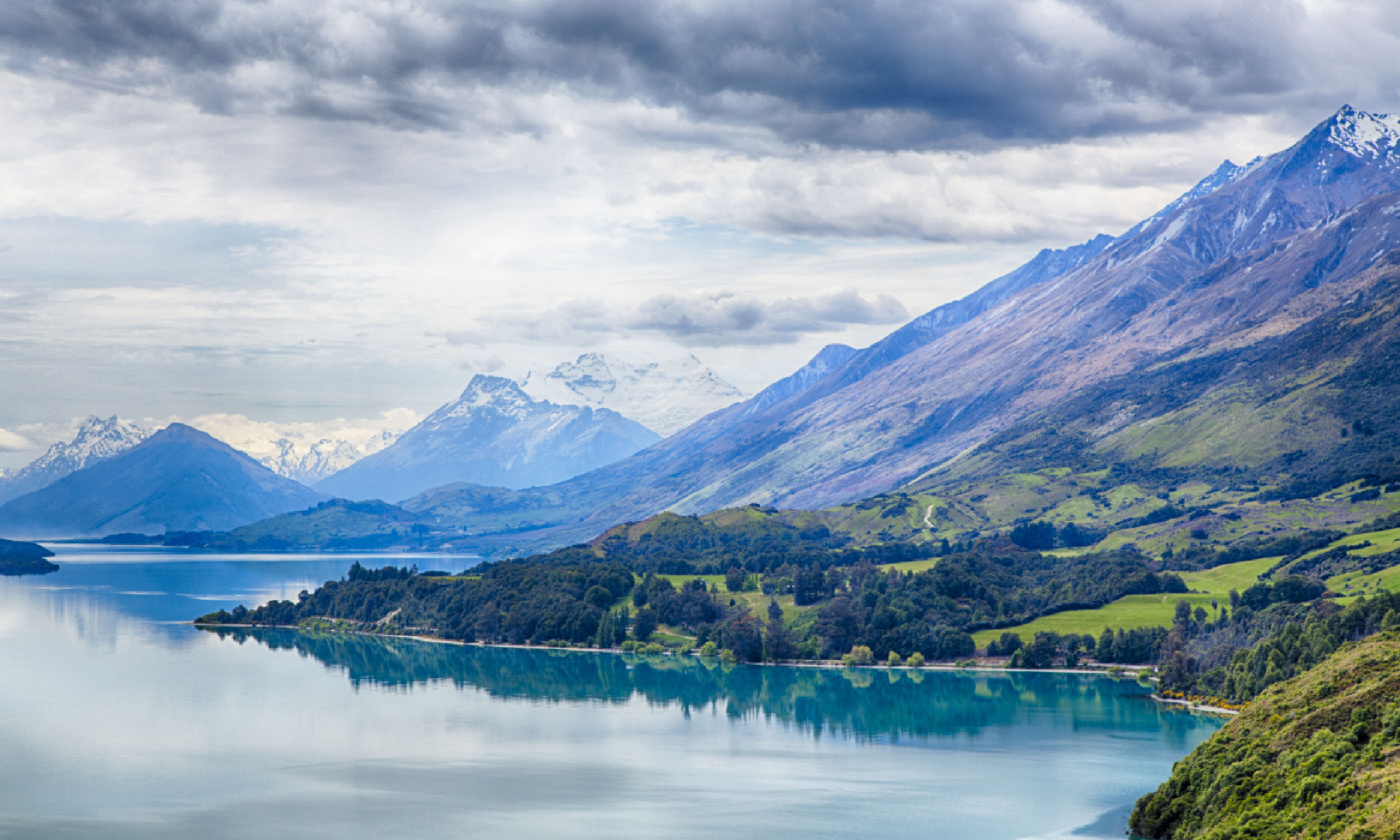 Lake Wakatipu
Best for?
Lake Wakatipu
Best for? Canoe, cruise or jet boat along the smooth, glacial waters of the lake. Take a trip on the Lady of the Lake, or the TSS Earnslaw as the famous paddlesteamer is officially known, to explore in comfort.
What else can I do? Queenstown is arguably the adventure capital of the world. Bungee jumps, sky dives and ziplines are all available for adrenaline junkies, while spectacular hikes include the summit trail of Ben Lomond and the route up Queenstown Hill.
Bikers can tackle a number of paths along the 110km Queenstown Trail, with the 12km Jack's Point Ride a particular favourite with mountain bikers.
The drive from Queenstown to Glenorchy is arguably the most scenic road trip in New Zealand. The 44km road hugs the eastern edge of the lake, allowing you to ogle its natural beauty from above.
Best time to visit? Travel between December and February and you'll be greeted with clear skies and sunny days. The lake and surrounding countryside aren't only enjoyed in the summer: head to the nearby peaks from June to August to experience the world-class winter sports facilities.
Lake Ohrid, Albania/Macedonia
If the ever-popular Italian and Swiss lakes get too crowded for your liking, Europe's oldest lake is ripe for exploring. Straddling the Albanian and Macedonian border, Lake Ohrid is three to four million years old, and is home to many little-visited spaces for visitors to discover.
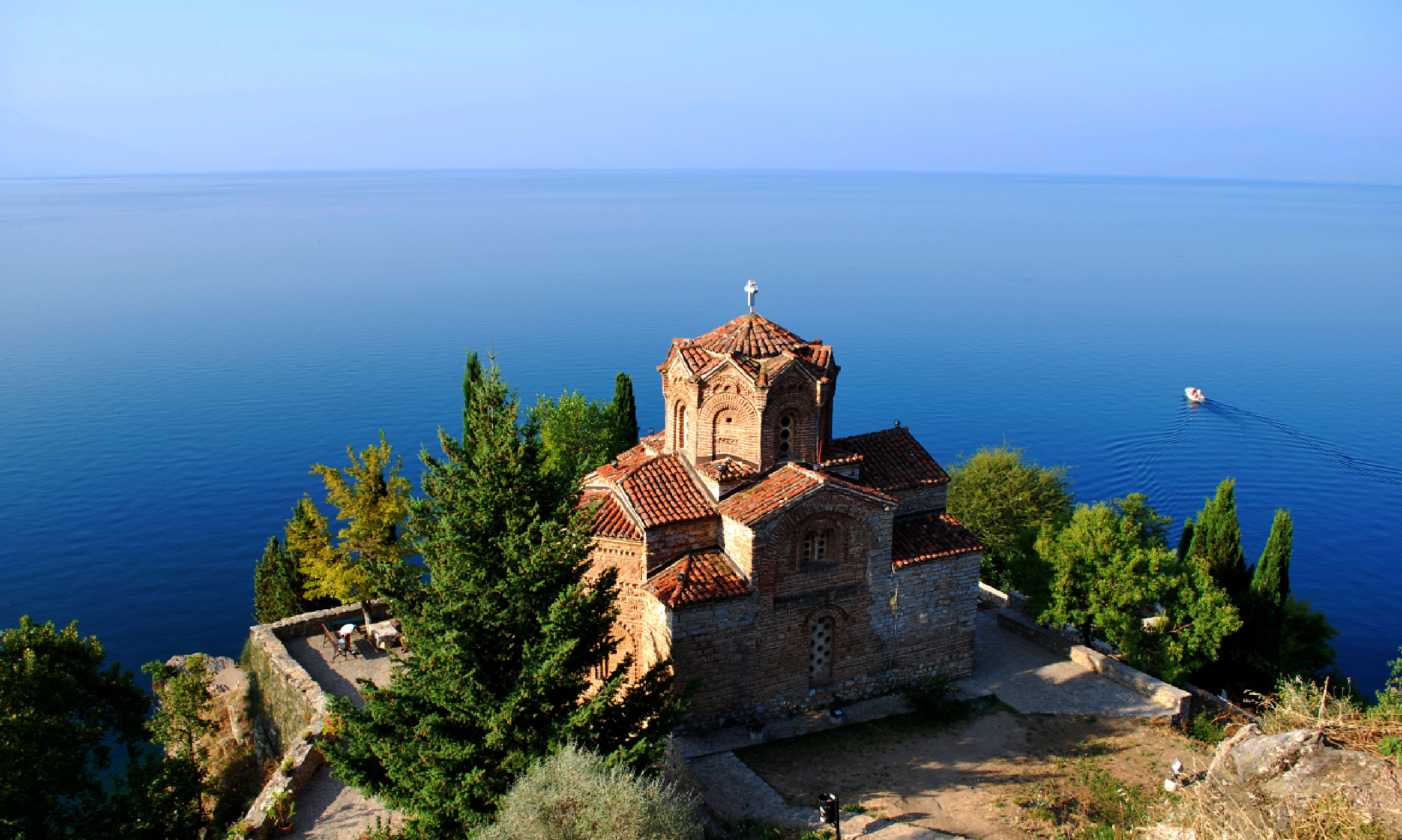 Lake Ohrid
Best for?
Lake Ohrid
Best for? The vast fresh-water lake is perfect for water activities. None more so than scuba diving: you can explore the underwater remains of several Neolithic settlements (with special permission), and peer over the drop-off at the lake's steep tectonic shelf.
What else can I do? Galicica National Park is sandwiched between Lake Ohrid and Lake Prespa, and is home to a number of hiking and biking trails. The Asan Dzura is a 15km trek through the heart of the park which bestows vistas across Lake Ohrid and Lake Prespa.
Both the lake and Ohrid city are UNESCO World Heritage Sites. The city is known as 'Jerusalem of the Balkans' due to its vast amount of churches. The church of St John at Kaneo is well worth searching out for its views across Lake Ohrid.
When to go? September is shoulder season for Lake Ohrid, so accommodation prices are cheaper, crowds are smaller, but the weather is still inviting.
Lake Atitlan, Guatemala
Surrounded by three volcanoes high up in the Guatemalan highlands, Lake Atitlan's clear blue skies and tempting waters are set amongst traditional Mayan villages and Central America's luscious scenery.
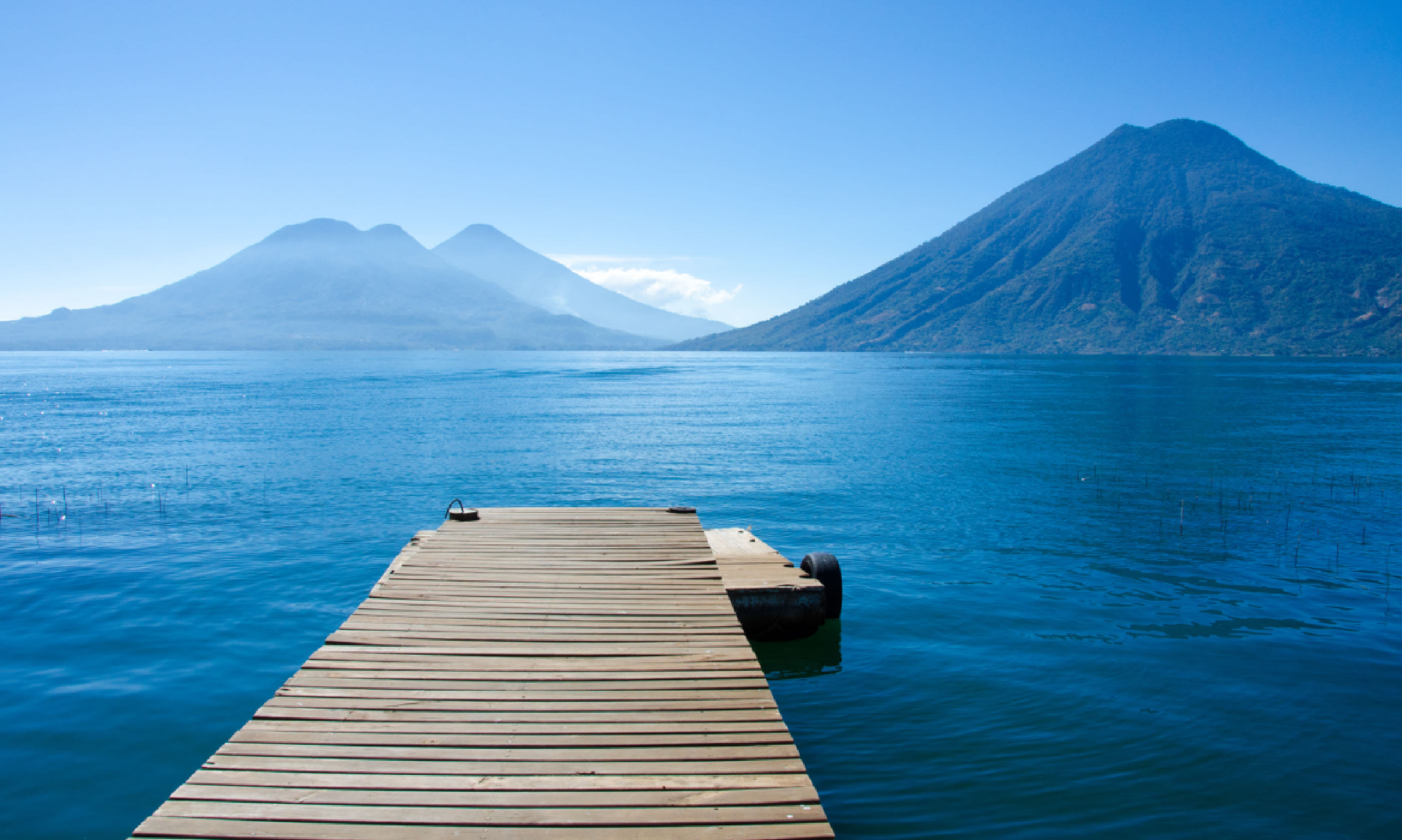 Lake Atitlan
Best for?
Lake Atitlan
Best for? Kayak to Santa Catarina to soak in the hot springs of the lake, or try your hand at traditional Mayan fishing in wooden kayaks.
What else can I do? Explore the bustling streets of Panajachel or head to Solola to experience the colourful market.
Sign up for a guided walking trip: you'll hike through coffee fields to the summit of San Pedro Volcano, or loop around the 50km perimeter of the lake. It's a great way to discover the lesser-visited Mayan settlements.
Lake Atitlan is also a haven for mountain bikers, with trails varying in length (from a couple of miles to several days) and difficulty. All routes boast glorious vistas of the lake.
Best time to visit? The dry season runs from November to April. December and January provide pleasant temperatures and clear skies in the highlands, although nights will be cold. The midday Xocomil wind, where warm ocean air clashes with cool highland air over the lake, may make some water activities tricky.
Lake Superior, USA/Canada
There's a reason it's called Superior. This lake is deeper and at a higher altitude than any of the other Great Lakes, and its mammoth surface area is circled by beautiful and varied national parks on both sides of the Canada/North America border. The lake is a paradise for boaters, bikers and adventure seekers.
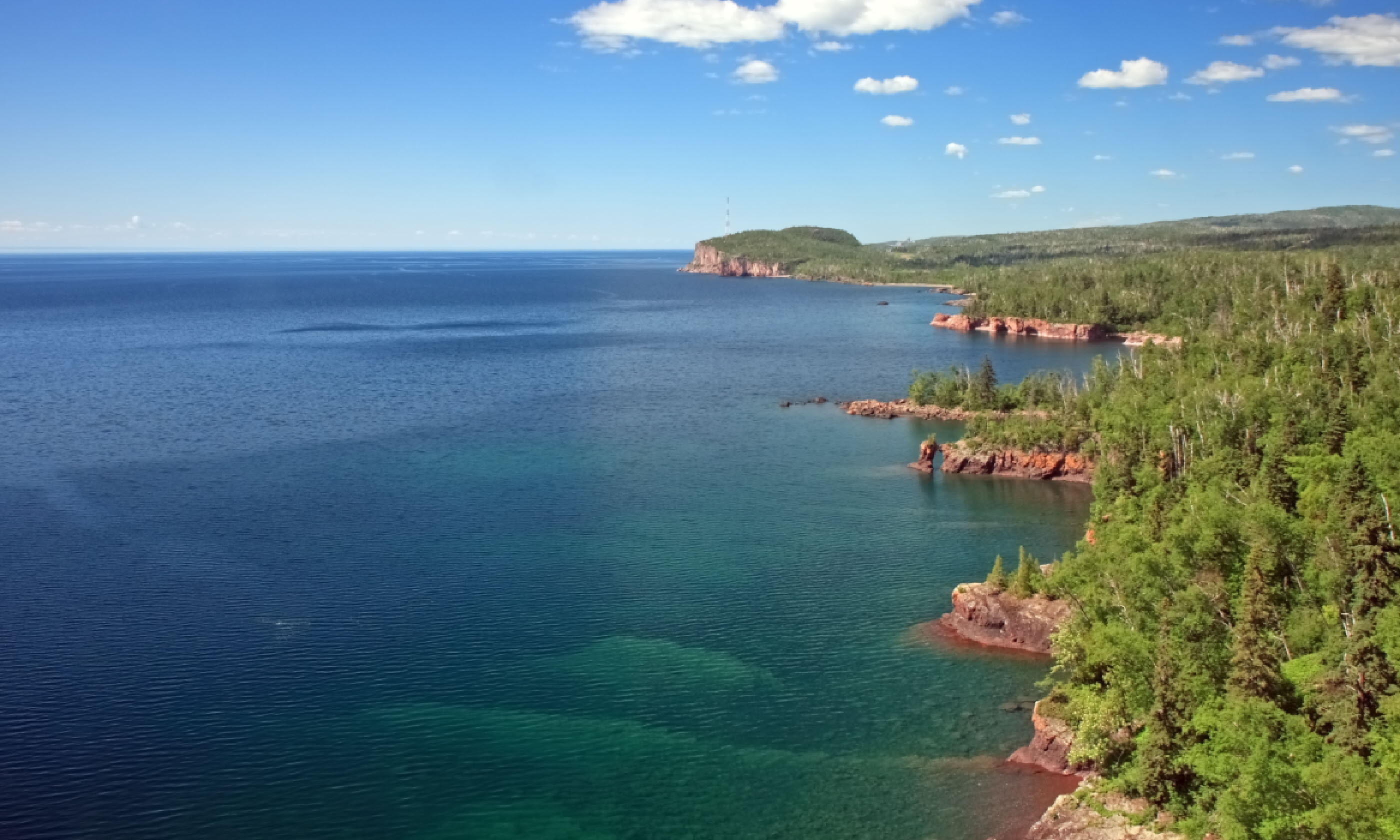 Lake Superior
Best for?
Lake Superior
Best for? Taking a boat out for a spin. Boats are not limited by size or power on Lake Superior, so you can easily explore all corners of the lake.
The cold but clear waters of Lake Superior boast the Alger Underwater Preserve, where you'll find scuba attractions such as sea caves and shipwrecks (such as The Bermuda and the Smith Moore) to explore.
What else can I do? Explore the US and Canadian National Parks. There aren't many better spots in the world to go hiking, wild camping and biking than around the national parks of Lake Superior. Isle Royale National Park in Michigan is a rugged island full of wolves, moose and hiking and biking trails whilst Pukaskwa National Park in Ontario is the only wilderness park in Ontario.
Best time to visit? Lake Superior offers something different every season. Cross-country skiing, ice climbing and snowmobiling can be enjoyed in the winter. Visit during the latter end of September and the beginning of October, and you'll experience the vibrant autumn colours, too.
Lake Titicaca, Peru/Bolivia
Situated over 12,500ft above sea level, the journey to Lake Titicaca itself is breathtaking. Depending on your chosen route, the Altiplano, Cordillera mountain range and several archaeological sites can be explored too – and the likes of Cusco and La Paz are within easy distance too.
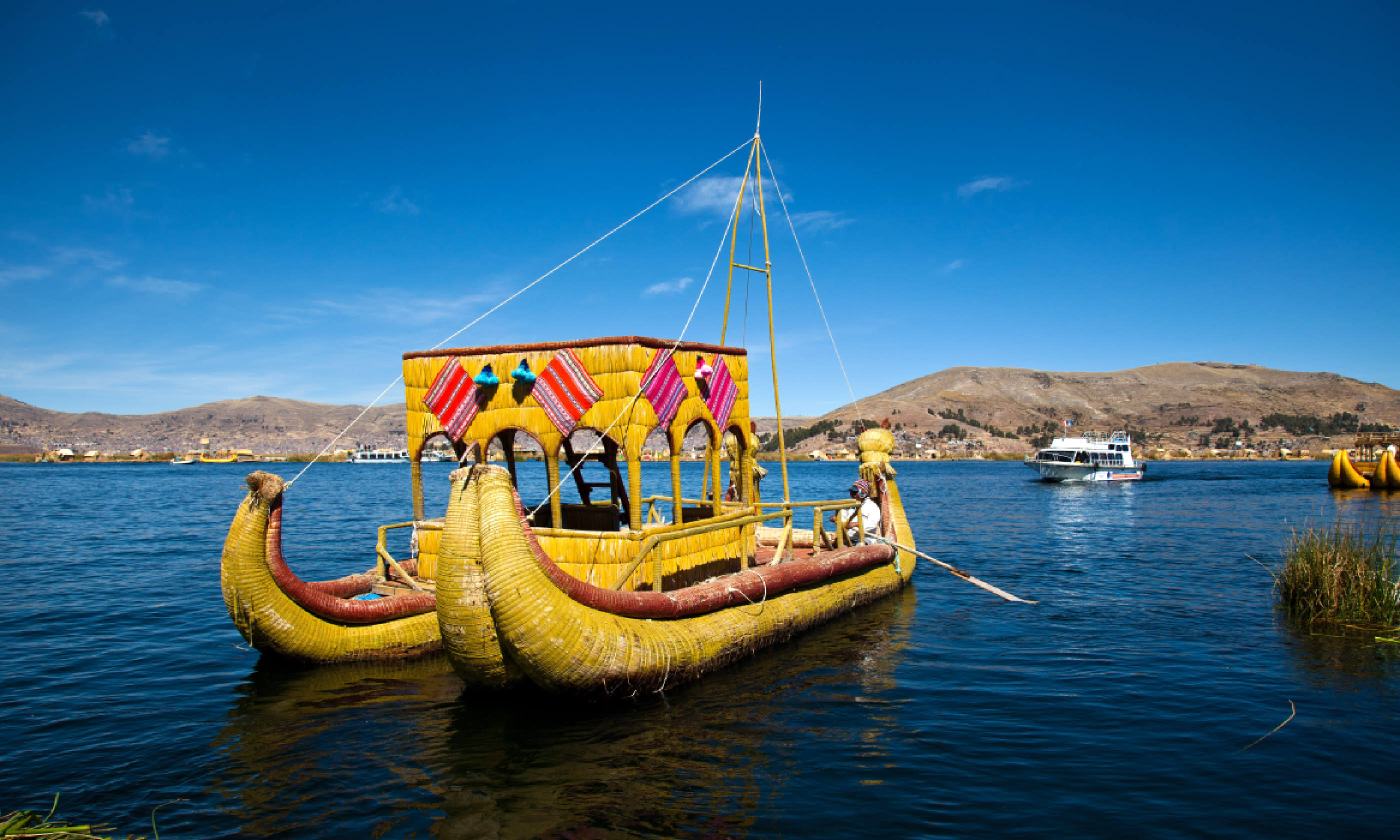 Lake Titicaca
Best for?
Lake Titicaca
Best for? Leave the hotels of Puno behind and instead enjoy a homestay on one of the lake's many islands. Learn how the inhabitants of Uros live on floating islands of reeds, or discover the intricate woven textiles of the Taquileños on Taquile Island.
Take a boat to the Isla del Sol to explore where the Incan god Viracocha originates from. The island is dotted with Incan ruins, including the Chincana labyrinth and Pilko Kaina.
What else can I do? Lake Titicaca's largest shoreline settlement, Puno, is a lively city famed for the frenetic week-long celebrations during the first week of November – which includes Puno Day (Nov 5). Hike to Huajsapata Park, about 10 minutes from the city centre, for views encompassing the city and the lake.
Best time to visit? Nights are cold year-round, while the summer months of December and January experience the most rainfall. Lake Titicaca enjoys its best weather between May and November with daytime temperatures reaching just under 20°C.
General Carrera Lake, Chile/Argentina
Buried deep in the heart of Patagonia lies General Carrera Lake. Split between Argentina (where it is called Lake Buenos Aires) and Chile, the lake's striking glacial waters hide numerous natural wonders.
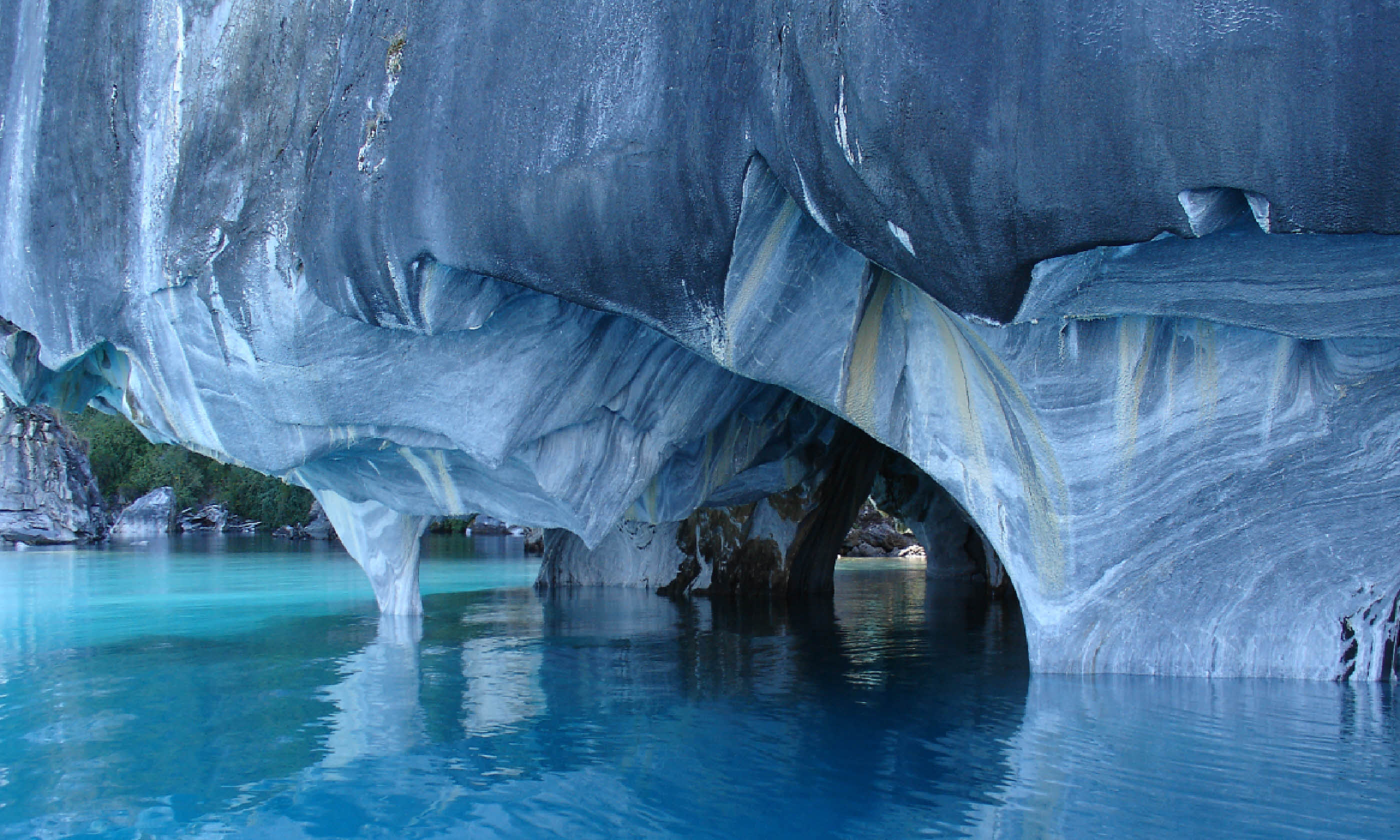 Unique marble caves, General Carrera Lake
Best for?
Unique marble caves, General Carrera Lake
Best for? Marvel at the marble caves in the shimmering turquoise water. It's quite the trek to this corner of Patagonia – a four- or five-hour drive south of Coyhaique, Chile. Those who do make the effort are rewarded with a system of stunning marble caves (known as the Capillas de Marmol). Hire a powered boat with a guide from Puerto Rio Tranquilo, a small town on the shore, or kayak to the marble caves.
What else can I do? Take a trip to San Rafael Glacier from Puerto Rio Tranquilo, or go rafting on the Rio Baker river. Explore lesser-visited glaciers, such as the Exploradores Glacier, in this area of Patagonia by horse or on foot.
Best time to visit? Although still chilly, summer in Patagonia (October to late February) provides the best conditions to explore the lake. Depending on weather conditions, you may even be able to walk among the marble caves.
Lake Kawaguchi, Japan
The most popular of the Fuji Five Lakes, Lake Kawaguchi produces stunning views of Mt Fuji, tranquil waters perfect for fishing, and shoreline walks that are hard to leave.
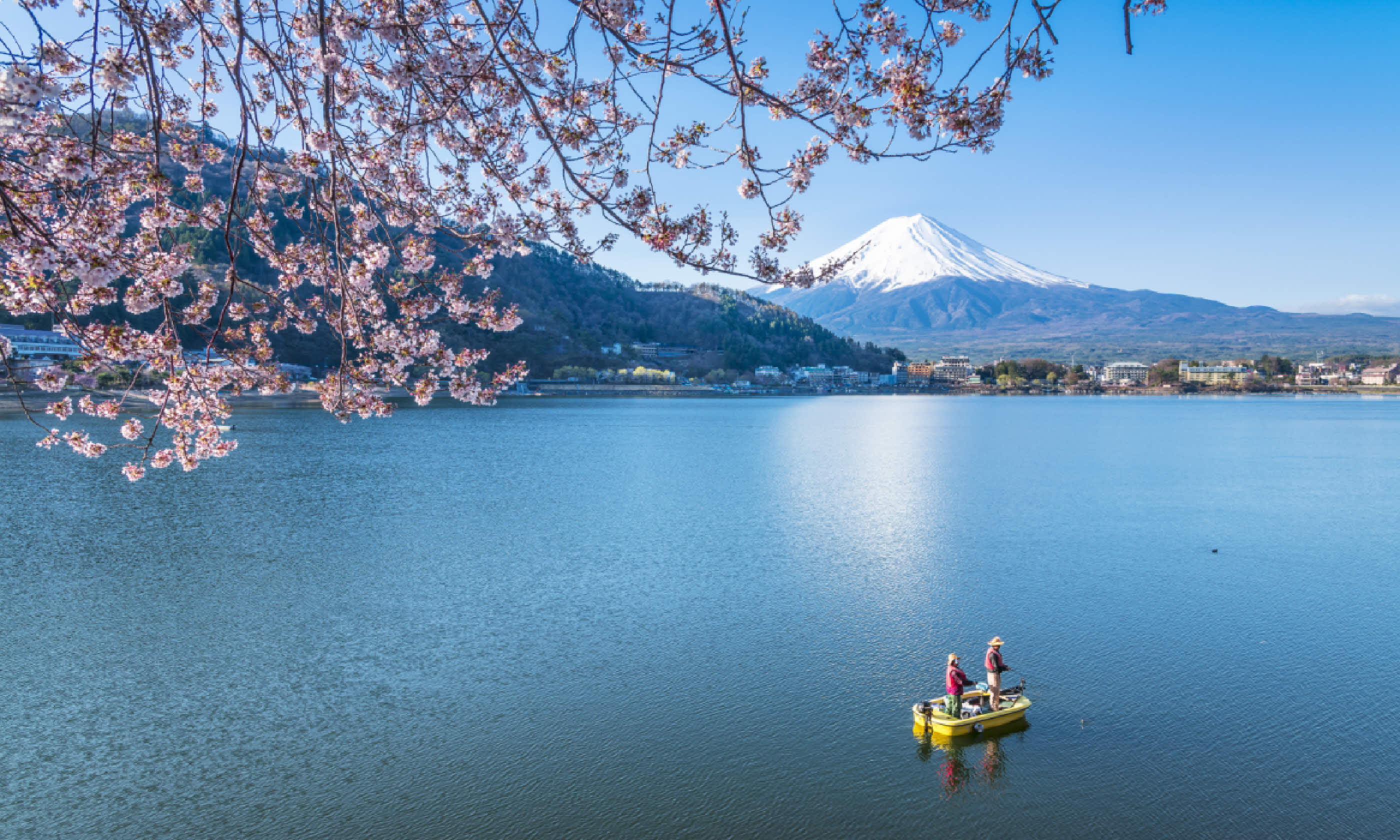 Mt Fuji at Lake Kawaguchi
Best for?
Mt Fuji at Lake Kawaguchi
Best for? Fishing in the shadow of Mt Fuji. Lake Kawaguchi is a favourite, with bass and rainbow trout in good supply.
Rent a row boat and explore the lake. The water can become quite crowded, but after a few minutes of rowing you can escape the masses.
What else can I do? Once you manage to pull yourself away from the mesmerising views of Mt Fuji, why not tackle the mountain itself? The official climbing period is between July and August when the weather is fairly mild and the mountain is normally snow-free.
Walk through the lake's tree-lined Koyo Tunnel or take the 'ropeway' to Mt Kachi Kachi for panoramic vistas of Mt Fuji and Lake Kawaguchi.
Best time to visit? Visiting in April will coincide with impressive cherry blossom displays, while during November Lake Kawaguchi blazes in rich autumn hues. Whatever time of the year you visit the lake, the visibility of the mountain is best in the morning.







